Introduction to Computer Science,Grade 11th,University Preparation (ICS3U)


-
Name:Introduction to Computer Science,Grade 11th,University Preparation (ICS3U)
-
Grade:Grade 11th
-
Prereq:None
-
Code:ICS3U
-
Type:University Preparation
-
Credit Value:1
-
Develop Date:2021-07-01
-
Course Price:CAD $1300
-
Status:Active
Course Description:
This course enables students to further develop knowledge and skills in computer science. Students will use modular design principles to create complex and fully documented programs, according to industry standards. Student teams will manage a large software development project, from planning through to project review. Students will also analyze algorithms for effectiveness. They will investigate ethical issues in computing and further explore environmental issues, emerging technologies, areas of research in computer science, and careers in the field.
Aims and Objectives:
- Relate the specifications of the internal components of a computer to user requirements.
- Relate computer specifications to user requirements, using correct terminology.
- Relate the specifications of common computer peripheral devices to user requirements.
- Identify the computer components involved in executing programming operations (e.g., assignment statements store a value in RAM, arithmetic operations are performed in the CPU).
- Demonstrate an understanding of an integrated software development environment and its main components (e.g., source code editor, compiler, debugger).
- Work independently, using support documentation (e.g., IDE Help, tutorials, websites, user manuals), to design and write functioning computer programs.
- Explain the difference between source code and machine code.
- Explain the difference between an interpreter and a compiler.
- Explain the difference between the functions of applications, programming languages, and operating systems.
- Use constants and variables, including integers, floating points, strings, and Boolean values, correctly in computer programs.
- Demonstrate an understanding of how a computer uses various systems (e.g., binary, hexadecimal, ASCII, Unicode) to internally represent data and store information.
- Use assignment statements correctly with both arithmetic and string expressions in computer programs.
- Demonstrate the ability to use Boolean operators, comparison operators, arithmetic operators and order of operations correctly in computer programs.
- Describe the structure of one-dimensional arrays and related concepts, including elements, indexes, and bounds.
- Write programs that incorporate user input, processing, and screen output.
- Use sequence, selection, and repetition control structures to create programming solutions.
- Write algorithms with nested structures.
- Demonstrate the ability to use existing subprograms within computer programs.
- Write subprograms that use parameter passing and appropriate variable scope to perform tasks within programs.
- Demonstrate the ability to identify and correct syntax, logic, and run-time errors in computer programs.
- Use workplace and professional conventions (e.g., naming, indenting, commenting) correctly to write programs and internal documentation.
- Demonstrate the ability to interpret error messages displayed by programming tools (e.g., compiler, debugging tool), at different times during the software development process (e.g., writing, compilation, testing).
- Use a tracing technique to understand program flow and to identify and correct logic and run-time errors in computer programs.
- Demonstrate the ability to validate a program using a full range of test cases.
- Demonstrate an understanding of emerging areas of research in computer science (e.g., cryptography, parallel processing, distributed computing, data mining, artificial intelligence, robotics, computer vision, image processing, human– computer interaction, security, geographic information systems [GIS]).
- Demonstrate an understanding of an area of collaborative research between computer science and another field (e.g., bioinformatics, geology, economics, linguistics, health informatics, climatology, sociology, art).
- Report on an area of research related to computer science, using an appropriate format (e.g., website, presentation software, and video).
Expectations:
- Representing Information:
By the end of this course, student will:
- Learn how to represent the same information in different ways and advantages of each of them.
- Learn how numbers and information are stored in computer systems.
- Lear how information can be stored in a way to save computer memory without losing any significant data.
- Computer Circuit:
By the end of this course, student will:
- Show understanding of how computers think and create logic.
- Learn how computers use smaller circuits to create larger ones and perform multiple functions.
- Computer Architecture:
By the end of this course, student will:
- Demonstrate knowledge about the internal structure of a computer.
- Understand how a computer deals with multiple processes at a time.
- Problem Solving:
By the end of this course, student will:
- Demonstrate knowledge and understanding about algorithms, which are the basis of computer programming, and how they can be presented as flowcharts and pseudo-code.
- Apply Knowledge about the basic constructs of an algorithm such as sequence, selection and iteration and how these are used to solve problems using computational thinking.
- Demonstrate the ability of completing and correcting algorithms in addition to algorithms to sort and search data.
- Programming Fundamentals
By the end of this course, student will:
- Demonstrate the ability to translate algorithms into programs written in a high-level language using constructs, such as variables and arrays.
- Learn how programs can be structured using subprograms and how data input can be validated to ensure that it is reasonable.
- Learn to deal with repeated instructions and storing large information in an organized manner.
- Program Organization
By the end of this course, student will:
- Understand how a computer’s internal structure looks like.
- Develop skills on how to create sub-programs from a larger code for the purpose of organizing your program code.
- Learn how programs can be tested for errors, and errors can be corrected.
- Topics in Computer Science
By the end of this course, student will:
- Learn about computing and how a list of instructions are assembled for execution.
- Demonstrate an understanding of privacy, digital inclusion and professionalism in computer science.
- Learn about the legal impact of technology and emerging trends in the field of computer science.
Unit-wise Progression:
|
Unit
|
Title and Subtopics |
|
Unit 1 |
Representing Information
-Hours: 12 |
|
Unit 2 |
Computer Circuit
- Hours: 10 |
|
Unit 3 |
Computer Architecture
- Hours: 12 |
|
Unit 4 |
Problem Solving
- Hours: 14 |
|
Mid-Term- Hours: 2 |
|
|
Unit 5 |
Programming Fundamentals
- Hours: 15 |
|
Unit 6 |
Program Organization
- Hours: 11 |
|
Unit 7 |
Topics in Computer Science
- Hours: 16 |
|
Culminating Activity – 15 Hours |
|
|
Final Term – 3 Hours |
|
|
Total – Hours 110 |
|
Teaching/Learning Methodologies:
The course has been devised to cater the IT skills regarding development of software applications that cater to the needs of different user requirements. The methodological approach of its design is student concentric in a way to prove tool documentation to understand configurationally technicalities. Students will be offered a robust repository of online video lectures to help back with reinforcement of the concepts covered in the lessons. Tools will be practiced in a way that learners will experience skill growth in terms of industry based standards such as producing well documented code, work in a concise manner dictated by the SDLC phase and work flow. The mentor allocated will provide skeletal files and help drafts for the student to work on projects for their course progression. A good habit that will be enforced is the documentation of each code snippet to help keep progress traceable and readable.
A few of the things students will be provided are the following:
- Lesson plans
- PowerPoint presentations
- Videos
- Reading Packs
- Assignment for Learning
- Assessment of Learning
- Quiz
All of these are a cluster of downloadable and embedded files that will be provided to each candidate with the progression of the course.
E-Learning Approach:
E-learning is not only a training method but it is a learning method that is tailored to individuals. It is found that different terminologies have been used to define learning that takes place online which actually makes difficult to develop a generic definition.
E-learning includes the delivery of content via Internet, Intranet, and Extranet, satellite broadcast, audio-video tape, interactive TV and CD-ROM. The term implies that the learner is at a distance from the tutor or instructor, that the learner uses some form of technology.
With attention to this new system of education that is spreading across the globe it’s imperative that the content of such study programs are enhanced and modified to serve both the learner and the instructor well whilst dealing with the gap of conventional studying methodologies. Thus the courses promise its reader an experience full of engagement, student-concentric approach, personalization and Interaction. Using a wide array of multimedia tools, cloud based LMS and diverse repository of subject tailored audio-visual material that student can utilize and learn in a stimulated work environment where he’s in charge of his work hours.
Our e-learners paddle through these courses in the mediation of skilled mentors to the finish line with understanding of their subject’s application into real world problems following a futuristic model of education.
Strategies for Assessment and Evaluation of Student Performance:
Assessment is the ongoing gathering of information related to the individual student’s progress in achieving the curriculum expectations of the course. To guide the student to his/her optimum level of achievement, the teacher provides consistent and detailed feedback and guidance leading to improvement. Strategies may include:
- Diagnostic assessment
- Formative assessment
- Summative assessment
- Performance assessment
- Portfolio assessment
- Rubrics
- Checklists
The final grade will be based on:
|
Weightage in Percentage
|
Categorical Marking Breakdown |
|
35% |
Course Work |
|
20% |
Mid Term |
|
15% |
Culminating Activity |
|
30% |
Final Exam |
|
Assessment of Learning
|
||
|
Student Product |
Observation |
Conversation |
|
Learning Logs (anecdotal) Assignment Pre-tests (scale/rubric) Quizzes (scale/rubric) Rough drafts (rubric) Graphic organizers (scale) Peer feedback (anecdotal/checklist) Reports (rubric) Essays (rubric) Webbing/Mapping (rubric/scale) Vocabulary notebooks (anecdotal) Visual Thinking Networks (rubric) Tests (scale/rubric) Exams
|
Self-proofreading (checklist) Class discussions (anecdotal) Debate (rubric) PowerPoint presentations (rubric) Performance tasks (anecdotal/scale)
|
Student teacher conferences (checklist) Debate (rubric) Peer-feedback (anecdotal) Peer-editing (anecdotal) Oral pre-tests (scale/rubric) Oral quizzes (scale/rubric) Oral tests (scale/rubric) Question and Answer Session (checklist)
|
Resources Required by the Student:
- Microsoft Suite (Word, Excel, Power-point etc.)
- A laptop, or Mac, or Android, or any other operating system functional enough to use the web browser and use online software’s.
- Headphones
- Curriculum Reference: The Ontario Curriculum, Computer Studies







